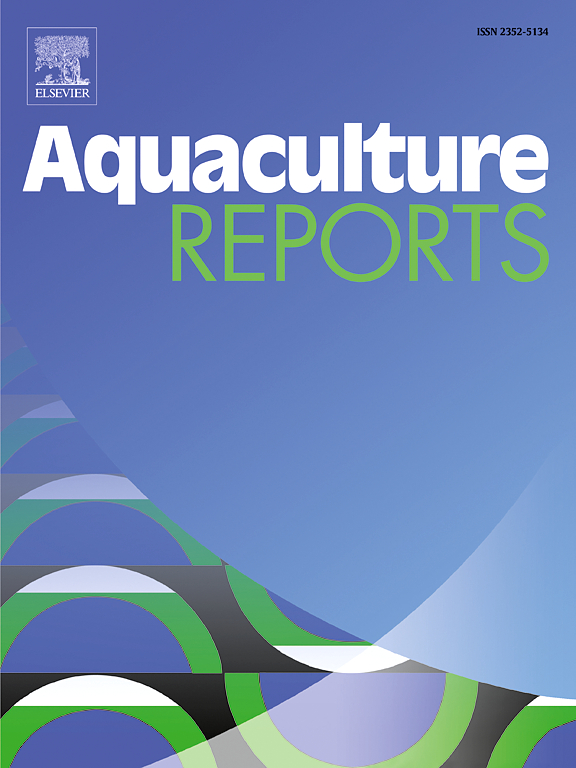Exploring the growth performance, antioxidant capacity, and metabolism of Babylonia areolata in response to yeast selenium supplementation
IF 3.2
2区 农林科学
Q1 FISHERIES
引用次数: 0
Abstract
This study aimed to examine the effects of yeast selenium on growth, antioxidant enzymes, and metabolites activity in Babylonia areolata under different selenium concentrations. Except control group, the experiment involved five other diets, with one containing sodium selenite (1.6 mg Se/kg diet) and three containing graded levels of yeast selenium (L-YSe (2.4 mg Se/kg diet), M-YSe (14.4 mg Se/kg diet), H-YSe (22.5 mg/kg), and one containing yeast (2 g/kg). The B. areolata (initial weight: 7.7 ± 0.9 g) were divided into four groups and fed with the different selenium diets. The results indicated that weight gain and survival rates of the M-YSe group (17.59 % and 100 %, respectively) were significantly higher than the CK (13.37 % and 96.67 %, respectively) (p = 0.0001 and p = 0.01, respectively). The hepatopancreas catalase (CAT) and glutathione peroxidases (GSH-Px) levels increased with the increasing dietary selenium content. The SOD, CAT, T-AOC levels in the M-YSe group were significantly increased by (34.05 %, 151.62 % and 131.5 %, respectively) than in the CK groups, while the MDA concentration was significantly decreased by (66.67 % lower). Additionally, our results suggest that yeast selenium supplementation activated related metabolites and glutamine metabolic pathways in B. areolata. These findings provide insights into the nutritional and health benefits of selenium-enriched B. areolata. The results also evidence that B. areolata has the potential to be used as a functional food source that can benefit human health due to its high selenium content. Thus, this study provides a theoretical basis for further exploration of the edible value and health care functions of B. areolata-enriched selenium.
求助全文
约1分钟内获得全文
求助全文
来源期刊

Aquaculture Reports
Agricultural and Biological Sciences-Animal Science and Zoology
CiteScore
5.90
自引率
8.10%
发文量
469
审稿时长
77 days
期刊介绍:
Aquaculture Reports will publish original research papers and reviews documenting outstanding science with a regional context and focus, answering the need for high quality information on novel species, systems and regions in emerging areas of aquaculture research and development, such as integrated multi-trophic aquaculture, urban aquaculture, ornamental, unfed aquaculture, offshore aquaculture and others. Papers having industry research as priority and encompassing product development research or current industry practice are encouraged.
 求助内容:
求助内容: 应助结果提醒方式:
应助结果提醒方式:


